By Susanne von Rosenberg, UC Master Gardener of Napa County
Most gardeners appreciate wildlife, even if we don't always appreciate what wildlife may do to cherished parts of our garden. There are many ways to support wildlife in our gardens, including planting pollinator plants for insects (especially plants that flower in the late fall, winter and early spring), planting seed or berry-bearing plants for birds, and allowing squirrels and other critters a share of your fruit and nut harvest.
The most important thing you can do for wildlife, however, is to provide consistent access to water. The best way depends on the types of wildlife you'd like to support.
We gardeners spend a good bit of time trying to protect plants from wildlife depredation, so it may seem contrary to invite wildlife into the garden. But I feel strongly that your garden and the planet will be enriched by encouraging wildlife to visit your garden.
Many insects get all of the water they need from their food sources, but it may surprise you to learn that some, including bees and butterflies, need water. You can actually train bees to prefer a certain water source by setting it up early in the year. By the time they really need the water, they are accustomed to coming to the location you selected.
The best options are shallow containers, such as a plant drainage saucer or a shallow bird bath, filled with rocks or other landing places. Bees prefer water with minerals in it (some sources refer to it as “dirty water”), so it's helpful to let some of the algae or leaves that fall into the water stay there.
Drain the water every few days to avoid mosquito breeding. (Mosquito eggs can hatch in 72 to 96 hours.) If you see what appear to be tiny tadpoles in your water, those are most likely mosquito larvae. Just drain the water to kill them. Bees find their preferred water source by scent, so it's best to keep the water source away from strongly scented flowers.
Butterflies can also use the bee water station but prefer to drink muddy water. The easiest way to create a puddling station is to fill a shallow container with a mixture of half sand and half garden soil or compost. Keep the mixture moist but avoid standing water, or drain water off regularly to avoid mosquitos.
You can also create a puddling area directly in the ground by creating a shallow depression, lining it with an impermeable liner and then filling it with equal parts sand and soil. Keep the area damp with a hose or by adding a drip emitter. The damp soil leaches minerals into the water, and the butterflies obtain the minerals as they drink. Like bees, butterflies need these minerals. Male Monarchs need the minerals to make pheromones, and females need them to support egg laying.
Birds need water for drinking and bathing. One of my favorite sights is watching small birds splash around in the shallow birdbath on my front porch. Keeping your bird bath in the shade keeps the water cooler and fresher. Birds appreciate nearby trees or bushes so they can preen after they bathe.
The ideal bird bath slopes from a depth of no more than 1 inch to a depth of no more than 2 inches. Small birds use the shallower edges, and larger birds such as jays like the deeper areas. Add a few rocks or pebbles for birds to land on, which also helps them judge the depth of the water. Birds will not enter water when they cannot tell how deep it is. Rocks or sticks that extend above the water surface will also allow insects to escape.
Change the water every one to two days. Birds leave debris and possibly droppings, so the water becomes unsanitary. You can use the birdbath water on your plants as long as you keep it away from any edible plant parts.
Small mammals, including squirrels, possums, raccoons, foxes and rabbits, are part of a balanced garden ecosystem. Although we frequently think of them as nuisances, they help keep insect populations under control. Also, if you like to watch birds of prey, you need small mammals in your garden to attract them.
Providing a water source encourages small mammals. A birdbath that is too deep for birds, a small pond or even a water dish can benefit these animals. Change the water frequently to avoid mosquito breeding. For ponds, use mosquito fish or an environmentally-friendly Bacillus thuringiensis israelensis (Bti)-based larvicide. Never release mosquito fish into natural water bodies. These fish aren't native to California and can disrupt ecosystems.
Got Garden Questions? Contact our Help Desk. The team is working remotely so please submit your questions through our diagnosis form, sending any photos to mastergardeners@countyofnapa.org or leave a detailed message at 707- 253-4143. A Master Gardener will get back to you by phone or email.
For more information visit https://napamg.ucanr.edu or find us on Facebook or Instagram, UC Master Gardeners of Napa County.
Attached Images:
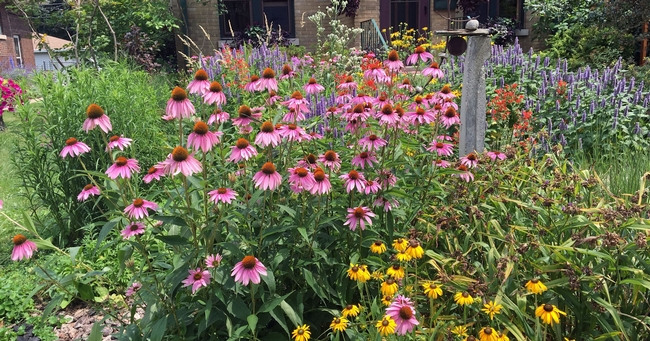
Garden of pollinator plants. (sierraclub.org)
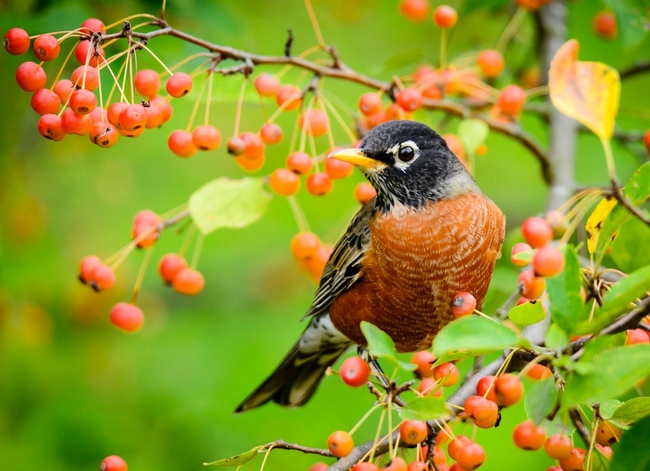
Berries are important for wildlife. (bobvila.com)
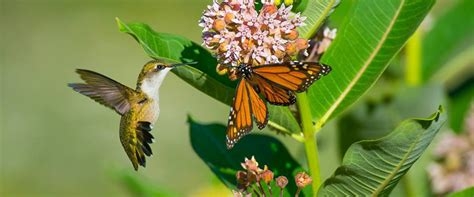
Hummingbird and Monarch having a pollen snack. (content.yardmap.org)
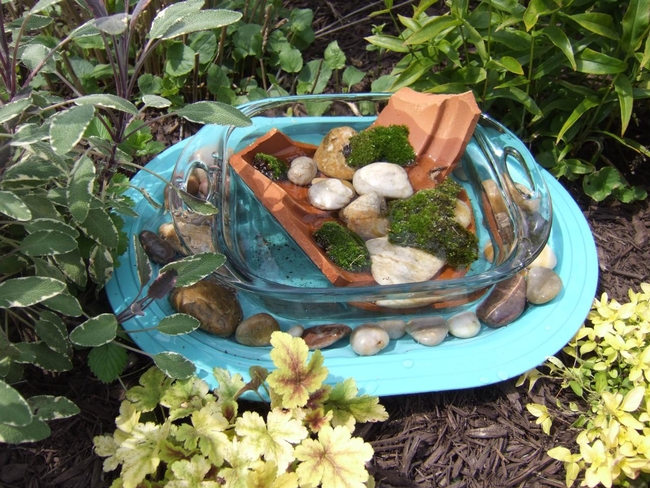
Pollen and berries are great but pollinators and wildlife need water, too. (diynetwork.com)
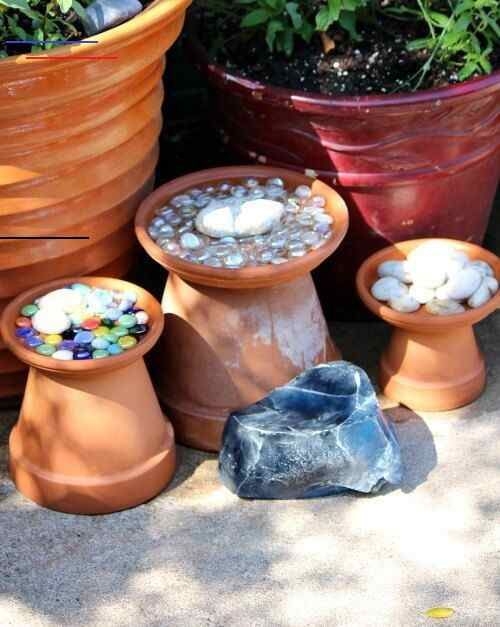
So many great ideas! (pinterest.com)
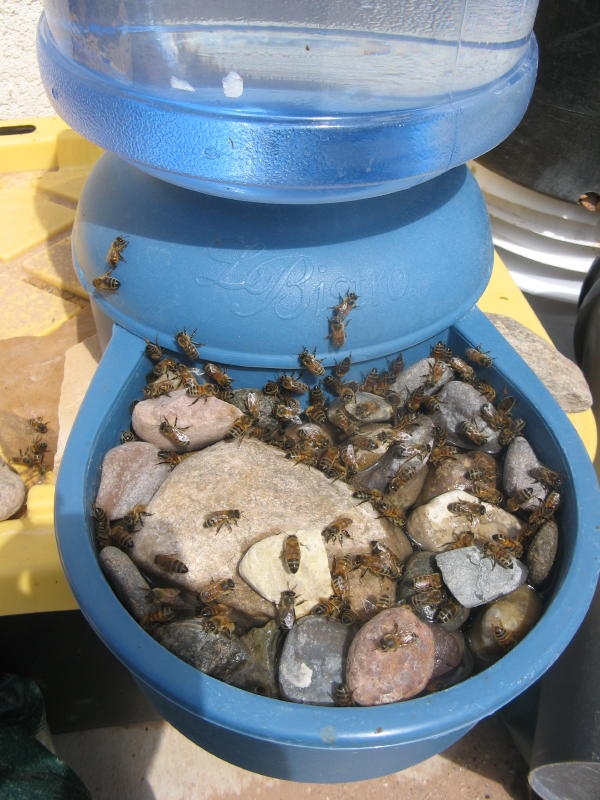
And here is another one. (offgridworld.com)
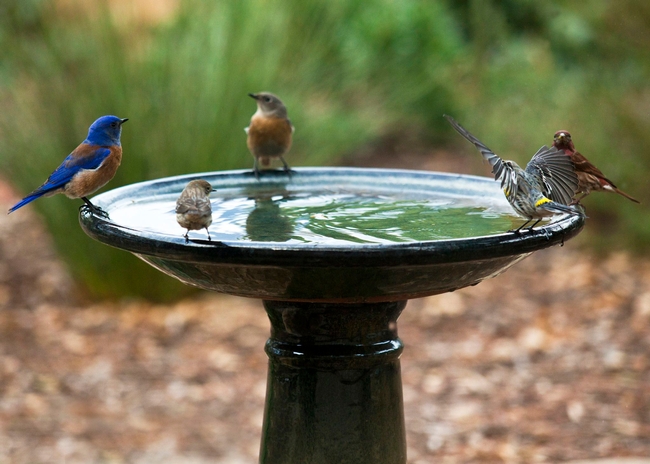
Birds in the bath. (thespruce.com)
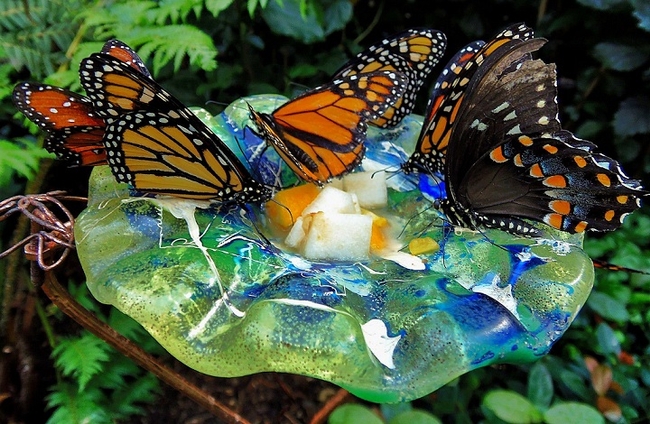
Butterfly water station. (quiet-corner.com)